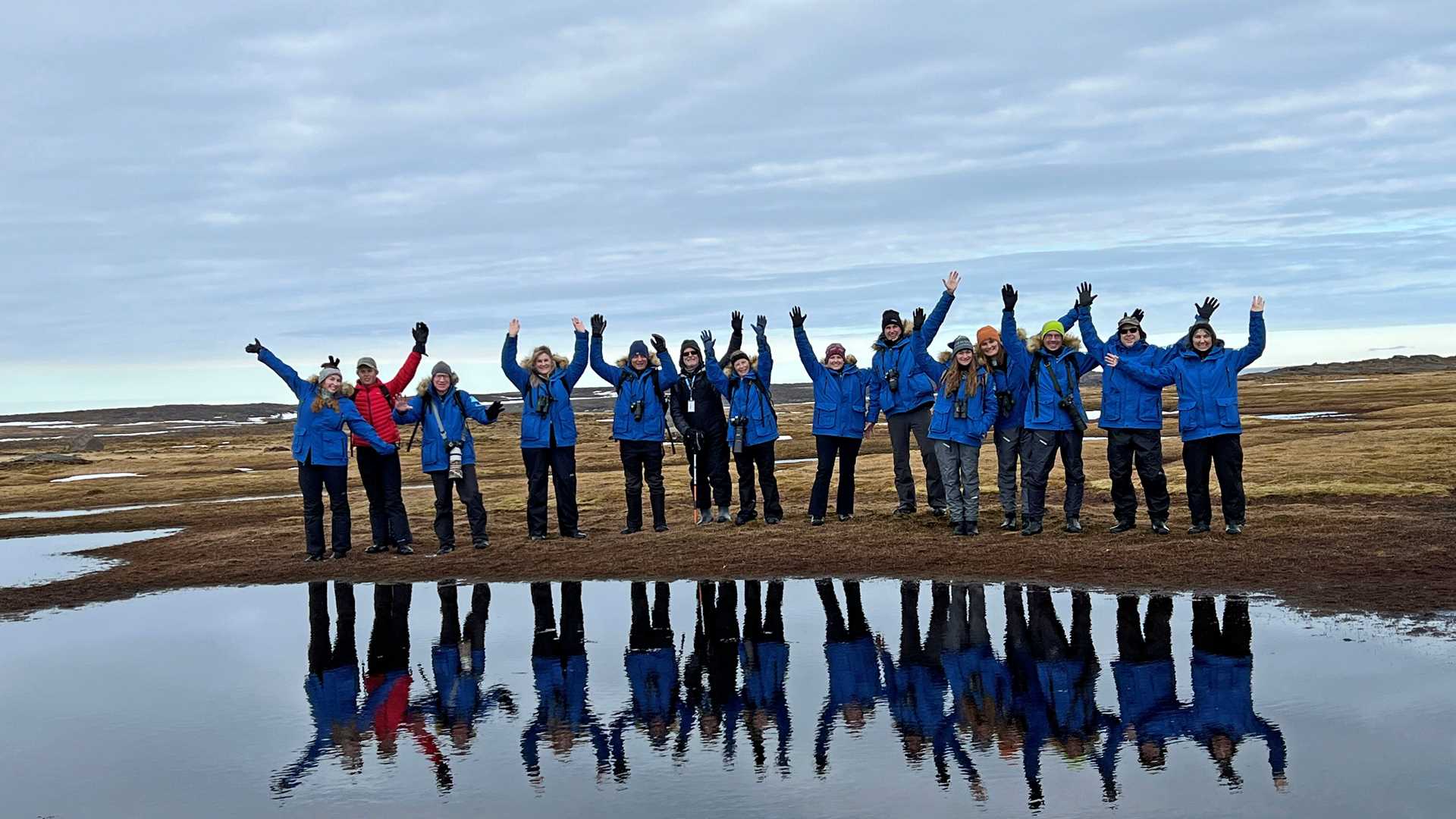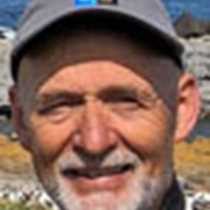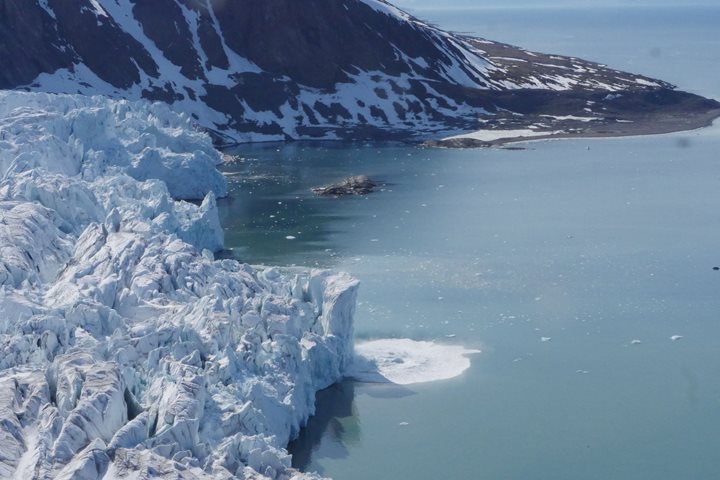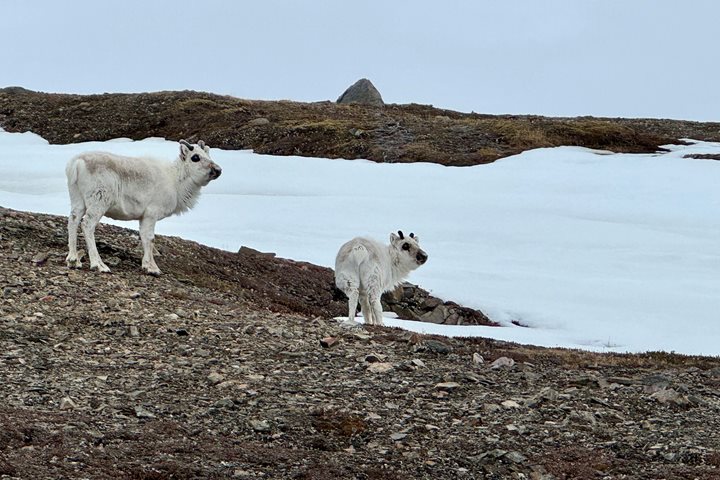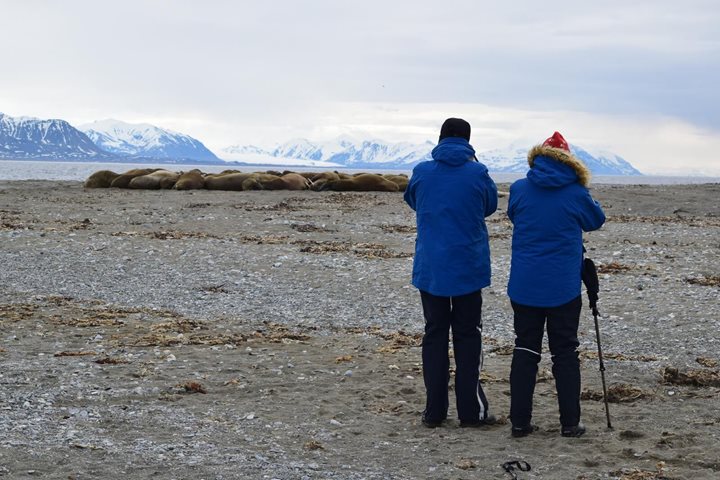This morning, we reached Edgeøya (“Edge Island”) in Eastern Svalbard. This is the third largest island in the Svalbard archipelago, and the area is known for its varied wildlife. The weather invited us to make a landing at Russebukta (“Russian Bay”). Edgeøya has a relatively lush tundra that sustains a rich population of the endemic Svalbard reindeer. During hikes of various lengths, we spotted a number of reindeer and a good variety of birds: pink-footed geese, barnacle geese, king eiders, common eiders, red-throated divers (loons), long-tailed ducks, red phalaropes, purple sandpipers, ruddy turnstones, black-legged kittiwakes, northern fulmars, and snow buntings. This represents almost half of the regular breeding bird species in Svalbard!
After lunch, expedition leader Stefano announced that two groups of Atlantic walrus had been spotted on a couple islands to the west of Russebukta. This iconic Arctic animal is definitely high up on the wish list for any visitor to the region. A Zodiac cruise was swiftly prepared, and we enjoyed amazing views of walrus hauled out on land and a good number in the water, too. What would be more relevant to follow than a presentation on the Atlantic walrus? In the late afternoon, naturalist Hazel Pittwood gave a very engaging talk on this largest of the pinnipeds in the Arctic Ocean.
A recap before dinner completed our adventurous day with short talks on what we have seen and learned over the last two days: beluga whales, retreating glaciers, local trapping history, the Svalbard reindeer, and a recap on photos from yesterday and today. We are now heading farther north to continue our exploration in the eastern part of the Svalbard archipelago.

